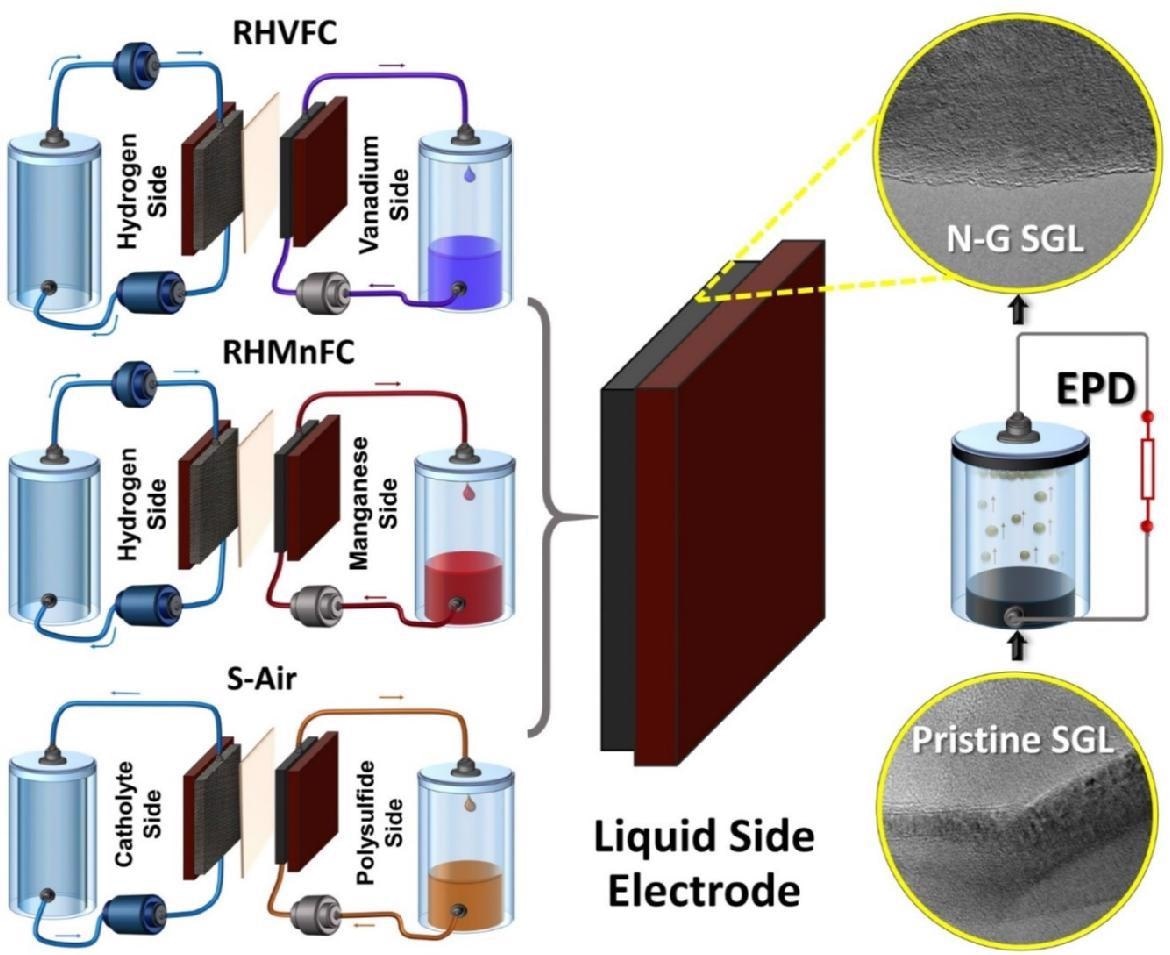Jan 25 2021
In association with Imperial College London, researchers from WMG Energy Innovation Centre at the University of Warwick have identified a new way to improve hybrid flow batteries and their commercial applications.
 A Binder-Free Horizontal Electrophoretic Deposition (EPD) Process Is Used to Activate Commercial Carbon Paper Electrodes Using Nitrogen-Doped Graphene. Image Credit: WMG, University of Warwick.
A Binder-Free Horizontal Electrophoretic Deposition (EPD) Process Is Used to Activate Commercial Carbon Paper Electrodes Using Nitrogen-Doped Graphene. Image Credit: WMG, University of Warwick.
The novel method can preserve electricity in these hybrid flow batteries for extremely long periods for about one-fifth the cost of present-day technologies, with zero emissions and minimal location limitations.
With the help of nitrogen-doped graphene (exposed to nitrogen plasma), the team has successfully improved three hybrid flow cells in a binder-free electrophoresis method (EPD).
Solar and wind power are progressively leading sources of renewable energy. Regrettably, intermittency problems prevent these sources from linking extensively to the National grid. This problem could be overcome by deploying long-lasting battery technology, for example, the redox flow battery.
But in spite of its immense potential, the present-day costs of this battery are a crucial decisive factor to real-world implementation. According to the US Department of Energy, a low-cost grid battery must cost £75/kWh. Lithium-ion batteries, which head the charge for grid storage, cost around £130/kWh.
The WMG team has now identified a new method to improve regenerative fuel cell (RFC) technology or hybrid flow batteries that are capable of storing electricity for extremely long periods for around one-fifth the price of present-day storage technologies, imparting minimal environmental effect and offering siting flexibility.
The new technology integrates carbon-based electrodes with affordably sourced electrolytes, (sulfur or manganese, which are abundantly available chemicals found on the Earth), using an easy yet extremely effective electrophoretic deposition of nano-carbon additives (that is, graphene doped with nitrogen). These additives considerably improve the performance and durability of electrodes in highly alkaline or acidic surroundings.
The investigators have reported their new findings in an article titled, “Hybrid Redox Flow Cells with Enhanced Electrochemical Performance via Binderless and Electrophoretically Deposited Nitrogen-Doped Graphene on Carbon Paper Electrodes” in the December 2020 edition of the ACS Applied Materials & Interfaces journal.
This EPD technique is not only simple but also improves the efficiencies of three different economical hybrid flow batteries thereby increasing their potential for widespread commercial adoption for grid-scale energy storage.
Dr Barun Chakrabarti, Study Co-Lead Author and Research Fellow in WMG, University of Warwick
The overall chemical cost of the hybrid flow battery is around one-thirtieth the price of competing batteries, like lithium-ion systems. With the help of upgraded technologies, electricity from solar or wind power could be stored for many days to even the entire seasons, for approximately £15 to £20 for each kilowatt-hour.
Hybrid flow batteries are also quite handy for grid-scale load-leveling applications because of their highly flexible design and this can be attributed to their special feature of sizing their power separately from their energy.
Moreover, the energy density with regard to a hybrid flow battery, particularly the polysulphide/air system (S-Air), is 500-fold higher than that of the pumped hydroelectric storage. Besides this, the hybrid flow battery is relatively more compact and can be placed close to any renewable generation.
Journal Reference:
Chakrabarti, B, K., et al. (2020) Hybrid Redox Flow Cells with Enhanced Electrochemical Performance via Binderless and Electrophoretically Deposited Nitrogen-Doped Graphene on Carbon Paper Electrodes. ACS Applied Materials & Interfaces. doi.org/10.1021/acsami.0c17616.